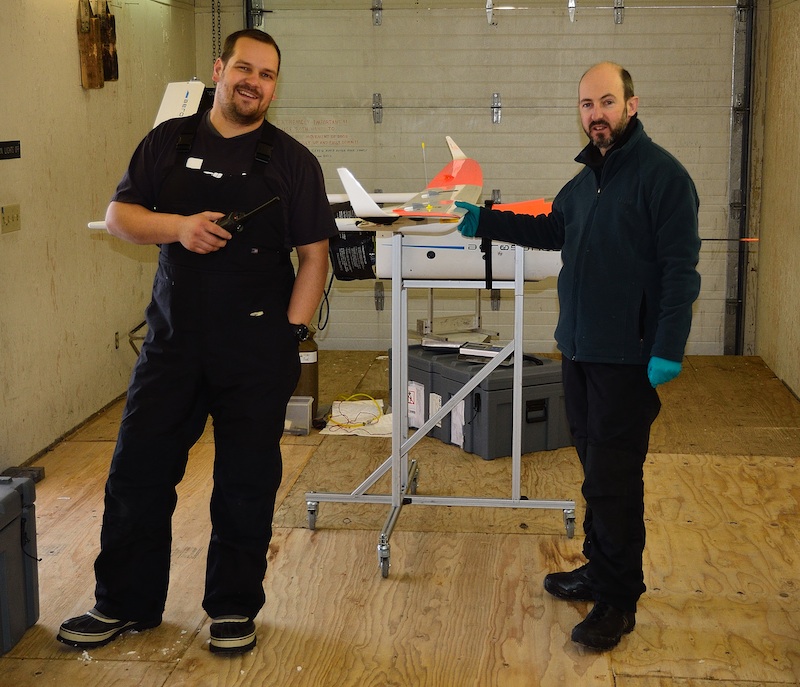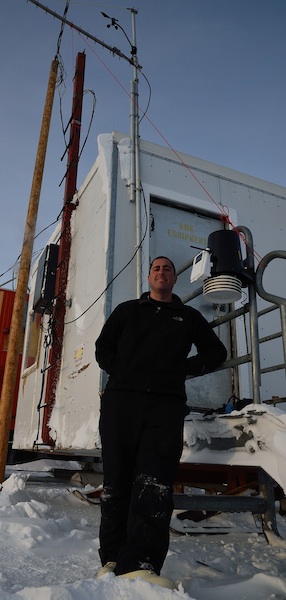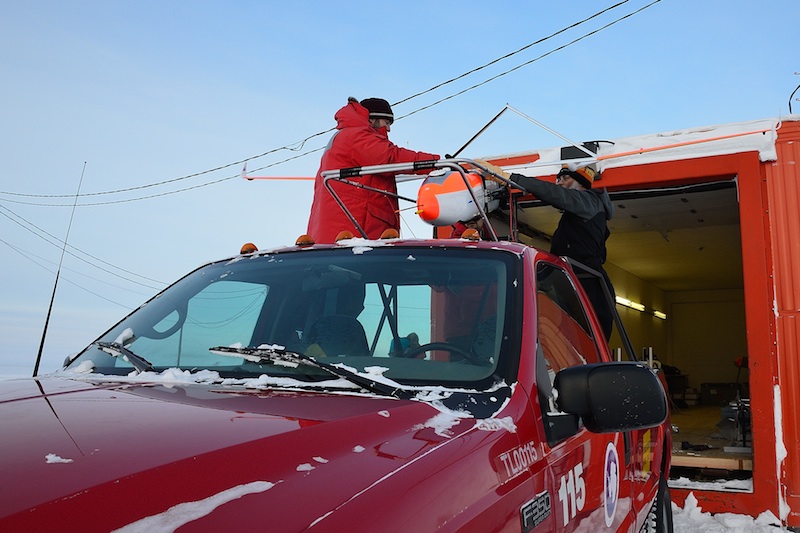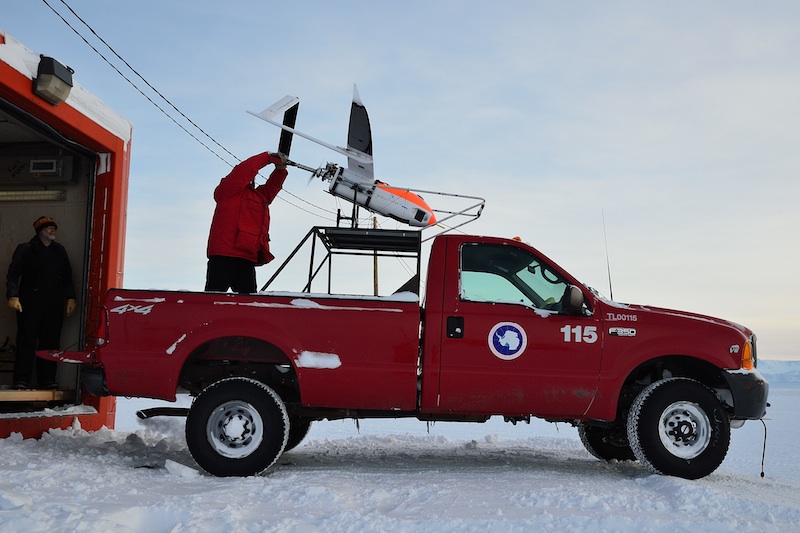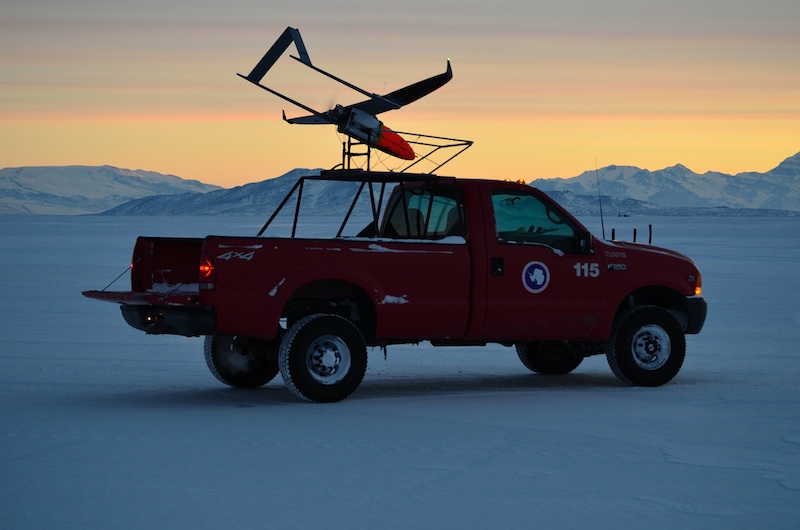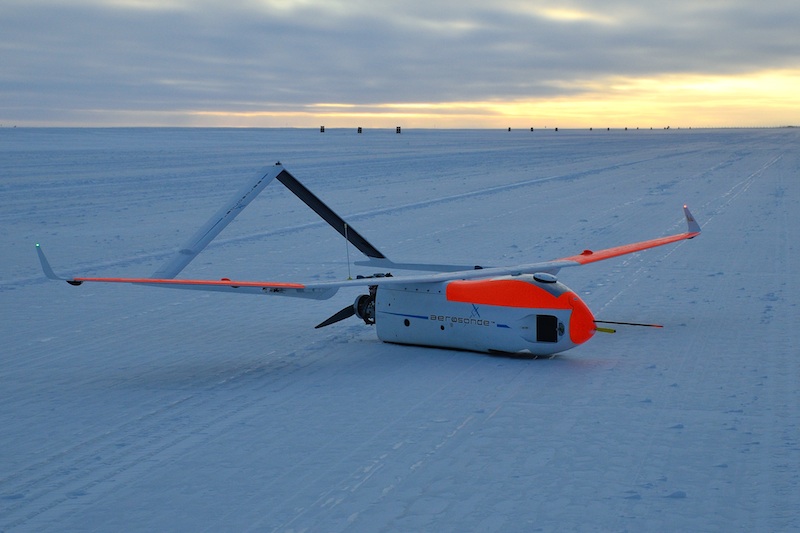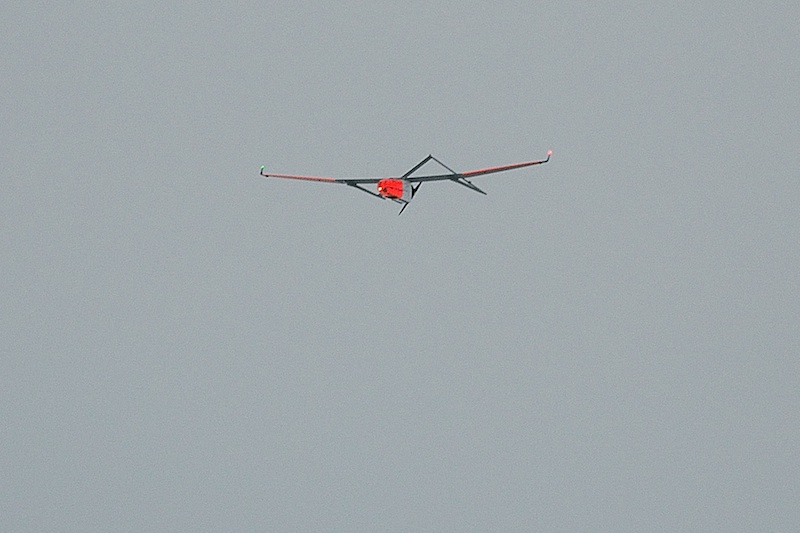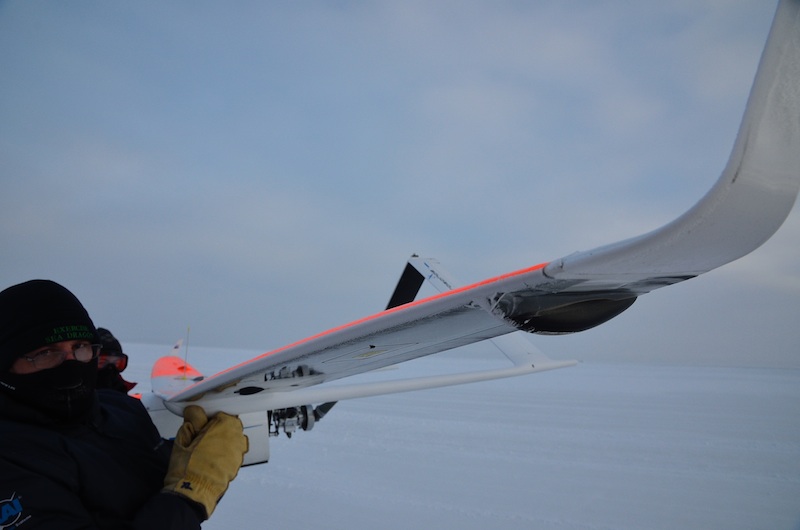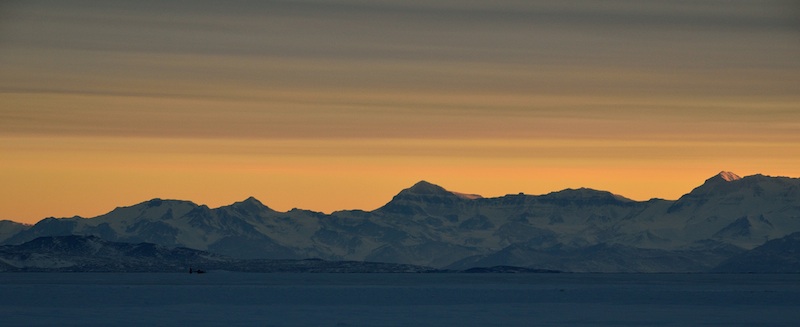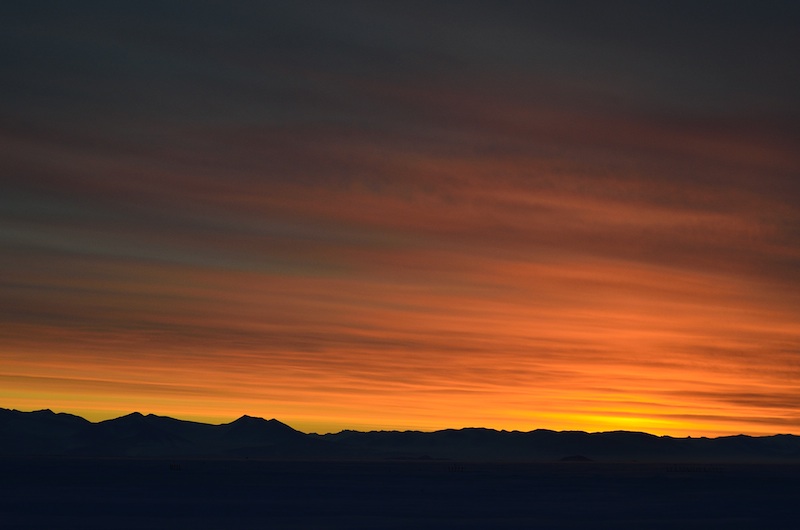After what seems like a long wait we’ve finally had our first Aerosonde flight yesterday. While we haven’t completed a science flight yet we are getting closer to that goal.
Everything always seems to take longer than you expect down here and this trip has been no different. Since we arrived two weeks are we’ve gone through all of necessary training needed to work in the Antarctic, got all of our cargo and unpacked it, reassembled and prepared the Aerosonde UAVs for flight, setup ground control computers in McMurdo and at the Pegasus runway that will allow us to communicate with the Aerosonde UAVs as they go on their 15+ hour missions, and moved most of our equipment out to Pegasus. Just when we had finished all of this we had a couple of days of stormy weather, that I talked about in a previous post. Once that bad weather passed we were ready to fly.
On Saturday we went out to Pegasus to do a test run of getting an Aerosonde (we have 5 Aerosondes here for this project) ready to fly. It takes a couple of hours to do all of the preflight prep work.
While the Aerosonde guys were doing this test run Shelley and I installed a Davis weather station near our hangar that will allow us to monitor the weather conditions in real time as we get ready for a flight.
After going through the first test run of prepping an Aerosonde for flight we began preparing a different Aerosonde for an overnight flight to Terra Nova Bay, a bit less than 200 miles north of Pegasus. After doing all of the preflight checks the Aerosonde is loaded onto a pickup truck fitted with a specially built launch cradle.
Once the Aerosonde is loaded onto the launch truck the engine needs to be started. This is done with a power drill fitted with a special bit that fits over the propeller. Here Paul is using the drill to spin the propeller and get the engine started.
After driving out to the runway we check the winds one last time before committing to the launch.

Nick is standing next to the launch truck checking the winds before deciding if we will go ahead with the launch.
By the time we were ready to launch the sun had set and it was too dark to safely launch the UAV.
While we were disappointed not to get our first flight under our belts on Saturday we were happy with working through the entire pre-flight process and identifying a few issues that we could streamline for future flights.
On Sunday we returned to Pegasus with the goal of doing two flights. The first flight would be a 3 hour test flight with the UAV circling over the runway. It is a good idea to do a local flight like this just to make sure the Aerosonde is working as expected in the cold weather. This flight went well and we all breathed a sigh of relief when the plane landed safely.
Once this first flight was completed the Aerosonde guys began preparing a second plane for an overnight science flight to Terra Nova Bay. The pre-flight work all went well and we launched our second flight of the day at 4PM. We launch the Aerosondes by driving the launch truck down the runway at 60 mph. When the truck gets going fast enough there is enough lift on the Aerosonde for it to take off. You can see a video of the Aerosonde launch here.
Once the plane was launched we let it circle over the runway to make sure everything was working as expected.
While the plane was circling over the runway we noticed that the engine was running too warm and it was decided that it would be best to land and remove some extra insulation that had been added to the engine specifically for the Antarctic flights.
The Aerosondes don’t have wheels so they land on their belly.
By 5:30 we were ready to re-launch the plane but by this time the sun had set and the weather had deteriorated with some low clouds and reduced visibility. Also as part of the preflight check we were unable to communicate with the Aerosonde using the Iridium satellite phone which allows us to monitor the aircraft once it leaves the vicinity of the runway, where we can communicate with the plane using a 900 MHz radio. As a result of the communication problem and the rapidly fading light we decided to abort the mission.
While we were all disappointed not to complete our first science flight we were happy to finally have put two planes in the air and to have gotten both of them back safely.
It looks like we won’t get a chance to fly again for a few days as the weather here is expected to get a bit worse. Shelley and I are doing all of the forecasting for our flights and there are quite a few things we have to watch out for.
First we need relatively light winds at the runway for a safe take-off and landing. Ideally we want less than about a 15 mph crosswind.
We then need to watch out for any areas of clouds as the Aerosonde can ice up if it flies through clouds with supercooled water.

Forecast map of relative humidity. Our flight is along the red line from Pegasus runway (south) to Terra Nova Bay (north) and areas of green shading indicate areas of icing concern..
Icing is a concern because it alters the shape of the wing, and thus degrades the ability of the wing to generate lift, and the ice adds weight to an aircraft which has a relatively small payload capacity to begin with.
Finally, we need to carefully forecast the winds we will encounter during the mission. The Aerosonde can cruise at an airspeed of 45 to 70 mph but at the higher cruise speed it will burn more fuel. Of course the airspeed is impacted by the wind that the UAV is flying through. A headwind increases the airspeed while decreasing the ground speed so we need to watch carefully for strong headwinds. Any headwind of more than about 30 mph starts to compromise our ability to safely recover the aircraft since we need to fly at a higher airspeed and thus burn more fuel. We don’t want to have a situation where we run out of fuel before we can get the Aerosonde back to the Pegasus runway since there are no alternate runways where we can land.

Model forecast of winds between Pegasus and Terra Nova Bay. Shading from yellow through red indicate winds that will be too strong for us to fly into.
Another factor we need to consider when planning our flights is daylight. Right now the sun is up for about 9 hours a day but with the long dawn and dusk we get in the Antarctic we have about 12 hours of useful light each day. Our flights to Terra Nova Bay will typically be between 14 and 18 hours in length so we need to plan our flights such that we take-off in the late afternoon, fly all night, and land the following morning. One advantage of taking off close to sunset is that we get to see some spectacular sunsets from the runway.
